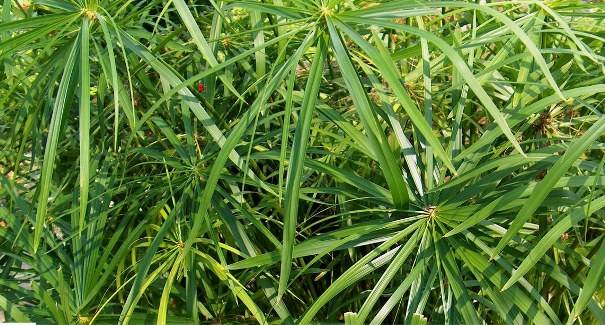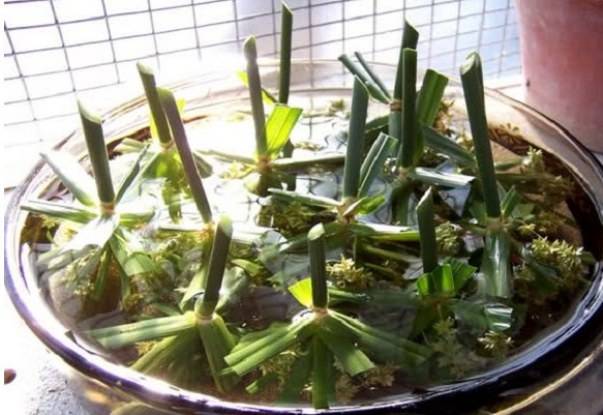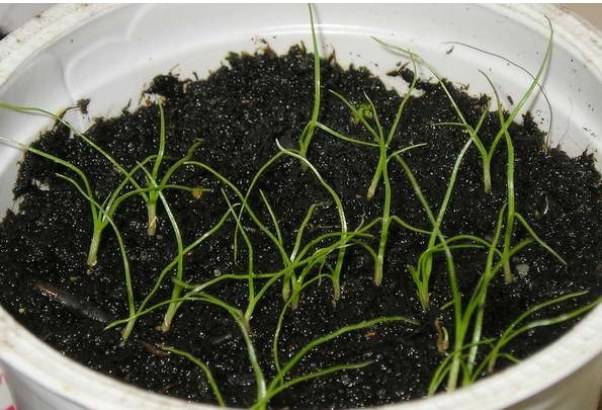Tsiperus flower - home care, soil
Content:
Since ancient times, people have used the cyperus flower to make parchment, on which they left their notes. These manuscripts are still found by scientists, the papyrus turned out to be so durable. Nowadays, people write on paper, and the plant is used for decorative purposes.
What does Cyperus look like, what family does it belong to?
Cyperus is a flower that belongs to the Sedge family, prefers high humidity, grows in the tropics. In total, there are about 600 species, few varieties of cyperus are suitable for the role of a houseplant. General characteristics of the flower: palm-shaped crown with fluffy inflorescences in the form of umbrellas.
Common varieties
Cyperus papyrus is not grown at home due to its impressive size, which can be 5 meters in height. The plant has thick shoots with a dense spreading top of threadlike leaves. In the axils of the leaves, inflorescences appear in the form of umbrellas, consisting of small spikelets. In nature, the bushes grow in the humid areas of Ethiopia and Egypt.
The favorite variety of cats, Zumula, Cyperus, has the appearance of a herbaceous bush. Can grow in ponds and pots. The crown of the flower resembles a fountain.
Tsiperus Helfer cannot live without constant access to moisture. Suitable for growing in aquariums, grows in bundles of long narrow leaves up to 45 cm long. In nature, it lives near swamps.
Cyperus Ordinary-leaved - a common houseplant, up to 1.5 meters high. It is a bush of long bare stems, on the tops of which there are umbrellas of narrow long leaves. Bunches of nondescript flowers grow from the base of the buds.
Cyperus Variegatny is a variegated form of a plant that has a crown shape like the Alternate-leaved one. The variety got its name due to the white longitudinal stripes on the leaves.
Healing properties
The plant has been used for a long time as a raw material in the manufacture of medicines for the treatment of the stomach, colds, and skin diseases. The beneficial properties of the herb help to cope with migraines, eliminate insomnia.
Features of caring for a flower at home
Everyone will be able to grow cyperus, caring for this plant at home is not difficult. The main thing is to follow simple rules: frequent watering, moderate light, acidic soil.
Temperature
The thermal regime of the flower is as close as possible to the comfortable one for humans. It is possible to achieve sustainable growth and flowering of cyperus at a temperature of 18-25 ° C. When the heat drops to 10 ° C, the plant will stop growing and the roots will start to rot.
Lighting
It is necessary to protect the plant from burns of the bright sun. The best place would be a shaded window. In the dark, the flower will begin to turn yellow and shed its leaves.
Watering
Throughout the year, the soil in the pot is kept moist. It is necessary to control that the bush receives a lot of liquid. You can put the flower in a tray filled with water. Pour boiled or melted water.Do not forget that ciperus is a tropical plant, it does not tolerate droughts, such as the cereus cactus.
Humidity
The flower loves high humidity, so you need to often spray the stems and leaves from a spray bottle. Won't hurt a warm shower in the bath.
It is necessary to ensure that the soil in the pot is always moist. Dry living conditions negatively affect the well-being of the culture, the stems and leaves begin to turn yellow, growth slows down.
Priming
The plant loves an acidic environment. A soil made from a mixture of peat, turf and sand is suitable, you can add bog peat. An important condition is that the soil must hold moisture well.
Top dressing
In spring and summer, the plant is fed with mineral fertilizers every 2 weeks. In winter, feeding should be done once a month.
Features of care in winter, dormant period
Winter is a time of relative calm. During this period, the culture is fed 2 times less often, watering should be reduced. Remember to maintain optimal temperature levels and good lighting.
Pruning
It is necessary to periodically prune old and diseased leaves, this stimulates the growth of the plant. To reduce the stress of the plant, the stem is cut to the very base.
How cyperus reproduces
The culture propagates by seed and vegetative methods. The following are methods that explain how to propagate Cyperus.
Germinating seeds
Cyperus seeds are poured into a flat box with nutritious moistened soil from which shoots will appear. Do not sprinkle with earth. The container is covered with glass and left in a room with diffused light at a temperature of 18-20 ° C for germination.
Rooting cuttings
When the flower has grown a lot in the pot, you can divide it into several separate parts and root it in new pots. For a year, the bush gives many shoots with its own roots, which will not be difficult to root. It is enough to dig up an adult bush from a flowerpot and carefully divide it into segments, which are planted in a new substrate.
Air layering
The plant can reproduce by air layering of the stems. With this method, the trunks are bent down with the leaves so that they are completely immersed in a glass of water. In a few days, the first roots will appear among the wetted leaves. The stem can then be removed from the mother plant and planted in a separate pot.
Other options
A popular method is to propagate Cyperus with umbrellas. The stalk is cut off with a knife in an oblique manner, so that 4-5 cm of the length of the stalk remains. The leaves are also shortened to a length of up to 3 cm and the branch is placed upside down in a vessel with clean water. After one to two weeks, roots appear, and 25 days after cutting, the sprout can be rooted.
Transfer
Cyperus grows rapidly and requires frequent transplants. This procedure is best done in March, before flowering.
A bush that has grown and no longer fits in the old pot must be planted in a new container. To do this, carefully remove the plant with a lump of earth, divide the rhizome into separate parts. They should be planted in new flowerpots with a prepared nutrient substrate.
Possible growing problems and diseases
Diseases and wilting of a flower are associated with mistakes in care, pest infestation from neighboring plants.
Drops buds and leaves
Improper care of cyperus, poor feeding and poor watering lead to the death of the plant. The flower signals a problem by shedding the crown. Watering with very cold water can damage the rhizome of the culture and the aboveground part without nutrition will begin to turn yellow and die.
Leaves turn pale
Leaves brighten and stop growing due to lack of light. Move the pot to a brighter place.
The tips of the leaves dry
With a lack of moisture in the air and dry soil, the tips of the leaves begin to turn yellow and dry. It is necessary to provide high-quality humidification of air and earth.
The lower leaves fall
In the phase of active growth of cyperus, the plant actively grows new foliage. If the old leaves are not cut off, they begin to fall off on their own. Also, leaf fall may indicate that the container for the bush has become too small, a transplant is necessary.
Pests
Due to the abundance of the juicy green mass of the indoor flower, pests are very fond of cyperus. The most common:
- Whitefly - microscopic moths, feed on plant sap, provoke yellowing of green mass.
- Aphids - small green insects leave sticky green marks on the surface of the flower. Twisted and deformed leaves signal the defeat of aphids.
- A spider mite wraps around the tops of the plant with a barely noticeable cobweb, the leaves begin to turn yellow, fall off, because they do not get air access under the layer of sticky mass.
- Mealybug parasitizes on stems and leaf plates, feeds on flower sap. A visual sign of this parasite is a white coating on the surface of the bush.
Insects are fought with fungicides, which are abundant in garden stores. Every month, the leaves are examined for pests.
Other problems
In bright light, foliage burns in the form of gray spots. Being in a cramped pot slows down the development of the bush; it is necessary to prepare a large container and new soil for transplanting cyperus.
Signs and superstitions
It is believed that the cyperus palm neutralizes negative energy in the house, protects a person from the effects of harmful fluids. If you start a flower, it will serve as a guardian of good relations between households, save you from conflicts. People will be easier to endure stress, become kinder and more truthful.
It is not recommended to put a flowerpot in the bedroom, as it takes vitality. A flower can only be placed in a permanent place near the bed for people suffering from insomnia.
Taking care of Cyperus is not difficult. It is necessary to observe the watering regime, transplant and feed the flower on time. Following some simple rules, you can get homemade papyrus on your windowsill.





















